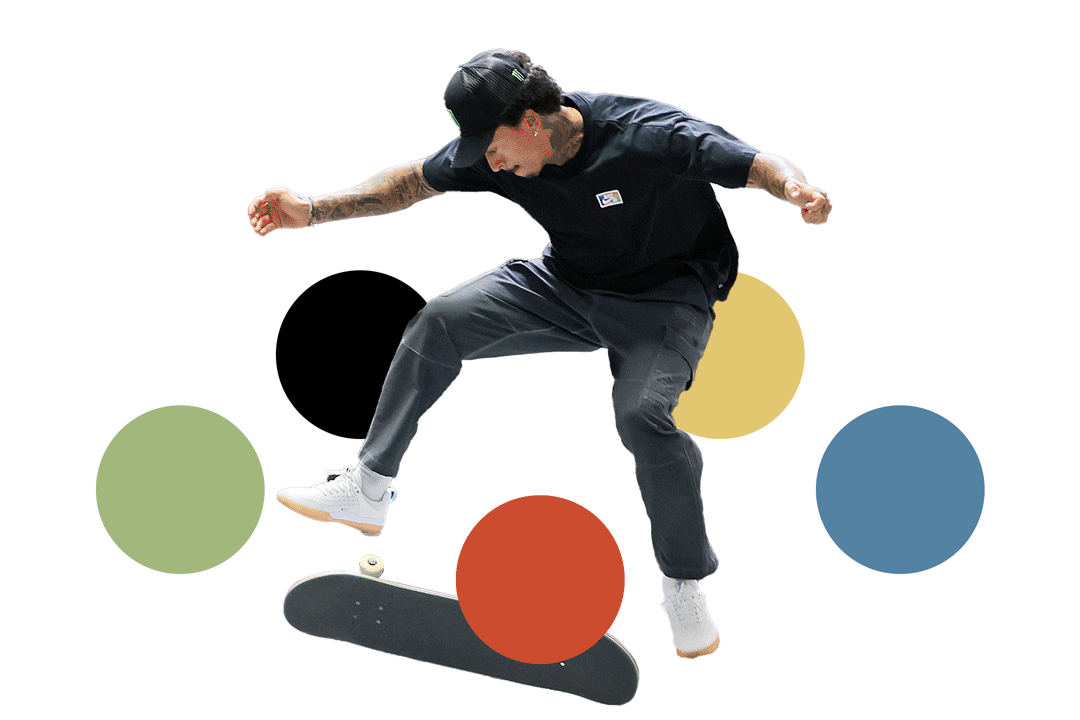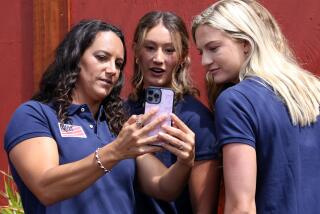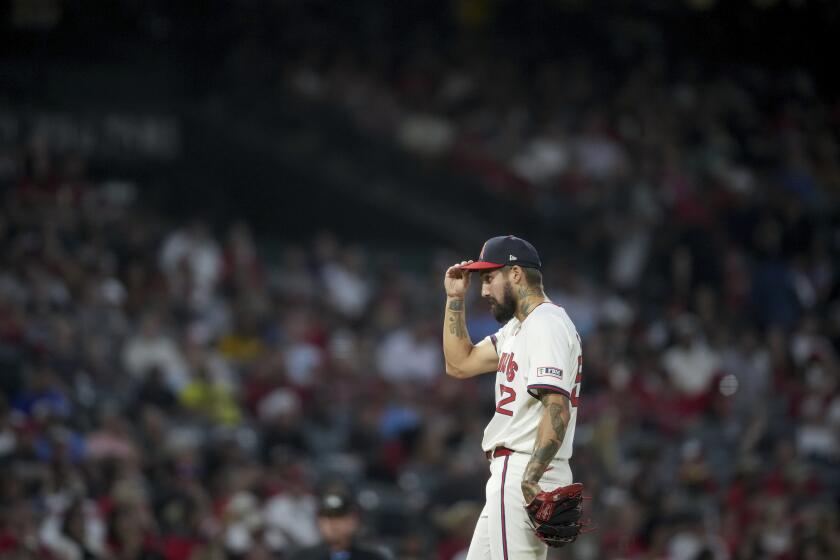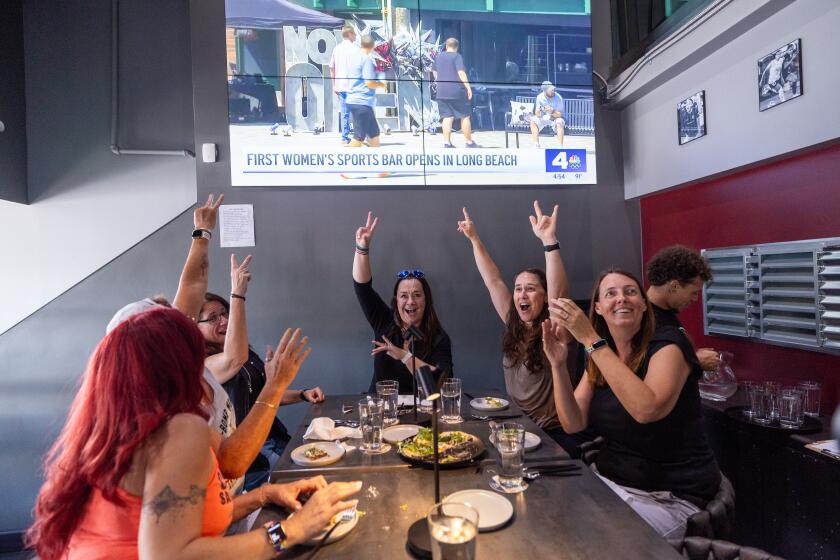They Just Keep Running and Running and . . . : Half marathon: Masters Circuit gains in popularity, no matter the race distance.
It might not be trendy or attract a lot of paparazzi, but it’s comfortable, like an old shoe, and has remarkable staying power.
“It’s not like in-line skating, which may switch to competitive vogueing next year,” Dean Reinke said. “It will be around forever. It’s not a faddish thing.”
Such are Reinke’s feelings on running. He is so convinced that running has endured the test of time that he started a program four years ago, the USRA Masters Circuit, that caters to competitors who are aging right along with the sport.
This is the first year that the America’s Finest City Half Marathon, which will run at 7 a.m. Sunday for the 14th time, is an official event of the 25-city tour. The circuit has a $10,000 Grand Prix and championship purse and offers 14 age groups for men and women beginning with the 40-44 division and continuing in five-year increments up to 70-over. The race lengths start at five kilometers, peak with marathons and include almost every distance in between.
The Masters Circuit has been confined mostly to the East Coast, but to bring more regional appeal to the circuit, it is slowly moving into the Western states. This year, tour stops include San Francisco, San Clemente and Seattle. It is cost-prohibitive for runners to race everywhere, so they can enter as few as five races--the minimum number to qualify for the season-end point standings--or enter them all and throw out their worst times.
None of the top men in the Masters Circuit will be running here this weekend, but one of the top women, Wen Shi Yu of New York, is. Yu is tied for first in the 55-59 age bracket.
This paltry showing of top-brass talent is hardly a reflection of an anemic state of masters running. In fact, it couldn’t be healthier. According to Al Sheahen, editor of National Masters News, participation in masters running competition, which started 30 years ago, has increased modestly every year.
“It’s been a slow, steady growth over the years,” said Sheahen. “We had over 5,000 compete in the World Veteran Champions Worldwide in Finland. It was our largest number ever.”
Likewise, the AFC Half Marathon has assembled the largest masters field in the history of the race. Masters runners accounted for 44% of the 4,512 registered in the open division through Friday. Last year, 35% of the entries were masters.
“You have an aging population and people are into participation more and more,” Sheahen said. “The most runners come from the 35-49 age group in your average running event. Close to 40% of all runners are approaching the 40 age group.”
Some of the more prestigious masters running clubs, including the Corona Del Mar Track Club, the Southern California Master Striders and the Los Angeles Valley Athletic Club, are located in Southern California. The San Diego Track Club--with approximately 30% of the club’s 900-plus membership made up of the 40-plus genre--has a strong masters unit.
In fact, San Diego is where it all began. David Pain, a retired attorney, was the first to implement masters division racing into running events as early as 1960. When masters running got its first national championship, it was staged here in 1968. It stayed through 1973, when other cities began to host the event.
“San Diego Track Club is one of the leaders in the running world,” said Dr. Keith Jeffers, a chiropractor known as the “running doctor” and a former president of the SDTC. “Our teams, when we run road races, usually win in the masters men and women divisions. We’re very competitive.”
Aging doesn’t diminish the competitive fires as much as it slows them down.
Point Loma’s Wayne Zook started running 22 years ago, for weight maintenance and health reasons, when he was 52. In 1990, he won the 70-over division of the AFC Half Marathon in 1 hour, 41.59 minutes, the third fastest recorded time in the nation that year.
A former marathoner, Zook quit running those when he was 65--time restraints--and has scaled back to 40 miles a week. He noticed that as he gets older, his recovery time is longer, his times are slower, and his pain threshold is unchanged.
“After a race, I can feel it longer, no doubt about that,” he said. “When you’re younger, you’re faster, but there wasn’t any more pain then. It’s the same in the younger days as it is now. It’s just that you’re times keep going up. It’s a little discouraging.”
Ultimately, the satisfaction Zook derives from running keeps him moving.
“(Running) makes me feel better,” he said, “and I’ve competitive by nature, so that gives me a reason to train. Racing motivates me. I’d probably drop off (some training) if it wasn’t for the competition.”
But sometimes, training, not competing, can be just as much fun.
Jeffers, 43, started running when he was 10. He was his college MVP at UC Santa Barbara and set a national junior college 10K record in 1968 at San Diego City College.
“Running is my business,” said Jeffers, who runs Jeffers Chiropractic & Sports Injuries. “Because I run such a busy life, sometimes I go six or eight months without running a race. But I competed at a highly competitive level for 30 years and it’s hard to maintain that.”
AMERICA’S FINEST CITY HALF MARATHON
Day of race--Sunday, 7 a.m.
Where--Race starts at Cabrillo National Monument, ends at Balboa Park. Shuttles transport runners from Balboa Park (Park Boulevard area) beginning at 4:30 a.m.
Length of race--13 miles, 192.5 yards.
Race course--Starts at the monument on Point Loma. Course slopes downward to the San Diego Bay, winds around Harbor Island, continues around the Star of India, turns inland toward Downtown and passes City Administration Building then starts up gradual grade into Balboa Park.
Prize money--$12,000 total purse; $2,000 top male and female winner; $250 masters male and female winner; $1,000 bonus for course record, open or masters; $500 repeat winner.
Records--Men’s-Kirk Pfeffer (Boulder, Colo.), 1:02.55, 1981; Women’s-Sylvia Mosqueda (Alhambra), 1:11.31, 1988; Men over 40-Antonio Villaneuva (Mexico), 1:05.20, 1982; Women over 40-Laurie Binder (Oakland), 1:18.31, 1987; Men Wheelchair-William Fricke (Long Beach), 1:03.18, 1988; Women Wheelchairs-Mary Jones (San Diego), 1:14.28, 1984.
Defending champions--Men-Jose Luis Chuela (Mexico), 1:04.38; Women-Laura LaMena (Tempe, Ariz.), 1:13.00.
Radio--XTRA (690 AM), 7 to 9 a.m.
Race watch--LaMena is back to defend her title; Chuela is not. The women’s race is shaping up to be the one to watch. Challenging Le Mena are a Canadian triathlete contingent led by Sylviane and Patricia Puntous, the twins who are both former Hawaii Ironman Triathlon winners and Carol Montgomery, winner of four major triathlons this year. Switzerland’s Danny Boltz, second in the Los Angeles Marathon this year, Mildred Tewawina of Yuba City, Ariz., the fastest Native American marathoner on record, and Mexico’s Alfredo Vigueras, winner of last month’s Mexico City Half Marathon and the Takara Cable Car Chase in San Francisco, are favored to heat up the men’s competition.
More to Read
Go beyond the scoreboard
Get the latest on L.A.'s teams in the daily Sports Report newsletter.
You may occasionally receive promotional content from the Los Angeles Times.






